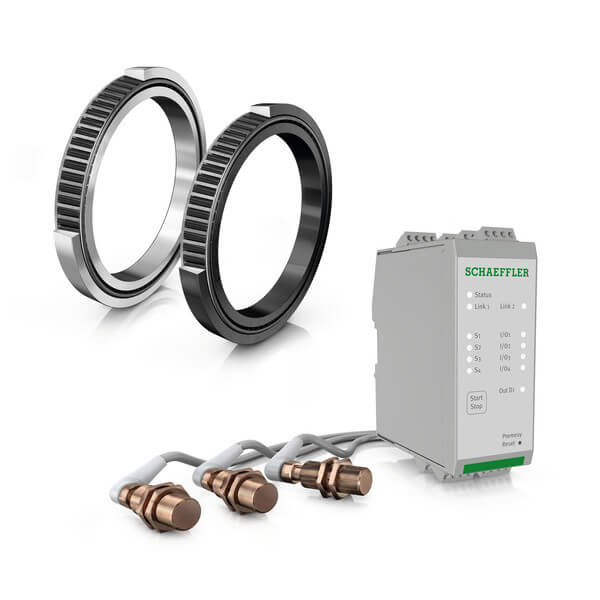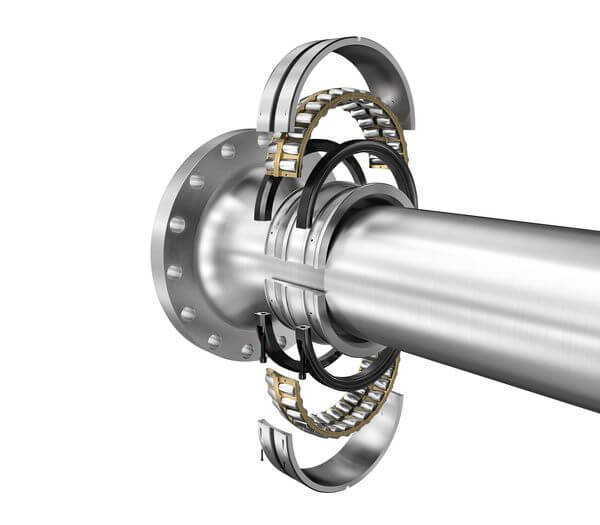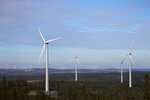News Release from Schaeffler Technologies AG & Co. KG
Wind Industry Profile of
New bearing solutions for higher power density, longer operating times, and lower carbon footprint
Wind turbine manufacturers and operators are currently faced with enormous challenges. How can higher performance be delivered on a permanent basis within exactly the same installation space while simultaneously extending the lifetimes of existing wind farms, improving the carbon footprint, and ultimately reducing electricity generation costs? Schaeffler provides answers to these questions at WindEnergy Hamburg from September 27-30, 2022. In Hall B5, Booth 333, visitors will be able to discover the innovative solutions being offered by the company and the resulting possibilities for producing wind turbines, and operating them sustainably and economically.
Series-ready hydro-dynamic plain bearings for planetary gears
Increasing power density in wind turbine gears, combined with the demand for reduced weight and cost, requires new bearings concepts. With planetary gears, this leads to a larger number of planets with smaller diameters, known as ‘multi-planet concepts.’ This means that not enough space is available for rolling bearings in the planet gears. Hydro-dynamic plain bearings are the solution here because of their low cross-section. At WindEnergy Hamburg, Schaeffler is introducing its new hydro-dynamic plain bearings and related engineering for planet gears. This is because a thorough understanding of the systems and new simulation and calculation methods, as well as the corresponding tools, is required to ensure that the bearings function smoothly.
Adjusted rotor bearings: compact and safe operation with PREMESY
Performance optimization has brought about a marked trend towards adjusted bearings with two tapered roller bearings in an O arrangement. The increased support spacing of this bearing arrangement reduces the inner bearing loads, whereby the bearing can be made smaller and lighter. To ensure that the adjusted bearings continue to function year on year, Schaeffler engineers fall back on various options from the tapered roller bearing construction kit. Selection takes place as part of a multi-level system simulation, which takes into account the effect of forces and deformation on the bearings in operation. The bearing details are checked, and in a simulation, the correct pre-load – essential for the adjusted bearings – is determined. In order to ensure this, both during the installation process and in operation, Schaeffler offers the PREMESY pre-load measuring system.

The increased support spacing of the adjusted rotor bearings reduces bearing loads, allowing the bearings to be made smaller and lighter. The Schaeffler PREMESY pre-load measurement system ensures accurate pre-loading, both during assembly and in operation (Image: Schaeffler AG)
Split asymmetric spherical roller bearings: economical operation after a change of bearings
Worldwide, a large proportion of the drive train concepts installed on rotors are fitted with spherical roller bearings. If these bearings fail prematurely, the high replacement cost, e.g., for cranes, usually renders it uneconomical to replace them. For such cases, Schaeffler has developed a robust and innovative solution based on split asymmetric spherical roller bearings. This solution can reduce the cost of replacing the bearings by a good 50 percent. Since the entire replacement process takes place in the nacelle, it is not necessary to disassemble the rotor star or powertrain. All the necessary components are lifted into the nacelle using the deck crane and assembled in situ. Therefore, Schaeffler enables operators to continue to operate existing wind turbines cost-effectively.

The split asymmetric spherical roller bearing can be installed directly in the nacelle. This makes it unnecessary to disassemble the rotor star and powertrain and reduces the cost of a bearing replacement by a good 50 percent (Image: Schaeffler AG)
CO2 footprint: major progress possible in the manufacture of rolling bearings
Wind energy is second only to hydroelectric power as one of the most climate-friendly energy production technologies. However, emissions in the upstream chain are also considered, such as in the production and processing of steel to manufacture the various components of a wind turbine. In order to significantly reduce the carbon footprint of roller bearings, Schaeffler implements CO2 savings potentials across the entire value chain, from the procurement of the steel, through the manufacturing process, to the logistics and packing.
Strategic partner for the energy revolution with green hydrogen
Since 2021, Schaeffler has added its own hydrogen unit to its service offer. Together with the wind power sector, this works on new, integrated solutions that support the achievement of Schaeffler's sustainability targets. Among other developments, an electrolyzer for the production of green hydrogen is scheduled to start operation at the Schweinfurt plant.
Stacks, the key components of these electrolyzers, form part of the Schaeffler product portfolio. The Schaeffler K-Series Hydron PowerStack will have an application range of 1 to 1000 kilowatts. It will be designed and produced at Schaeffler sites in Europe, according to the highest quality standards. Electrolyzers can also be installed locally as modular systems. This makes it possible, for example, to link them with individual wind turbines.
- Source:
- Schaeffler AG
- Author:
- Press Office
- Link:
- www.schaeffler.de/...
- Keywords:
- Schaeffler, WindEnergy Hamburg, bearings, turbine, performance, carbon footprint, repair costs, wind farm, operator, value chain



























